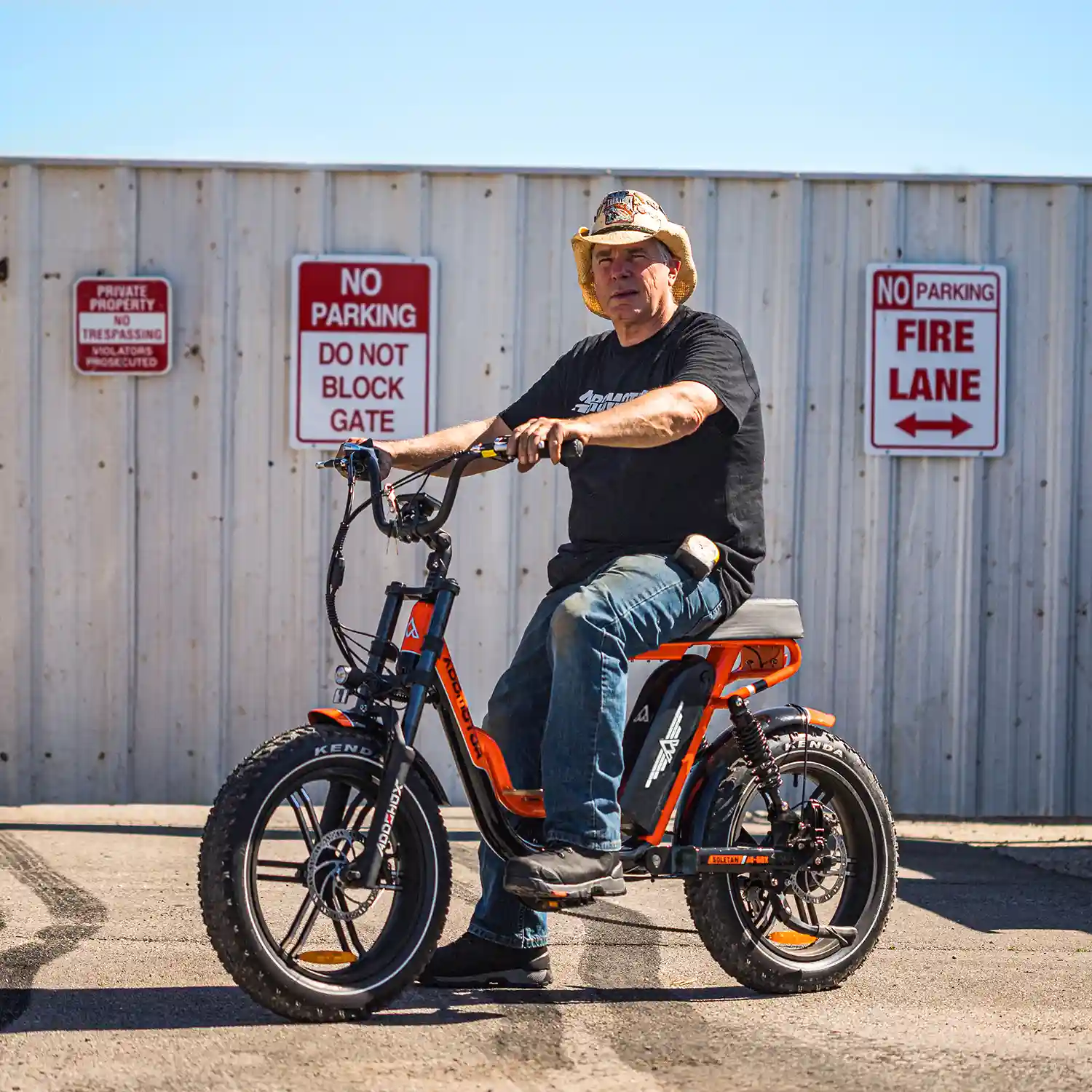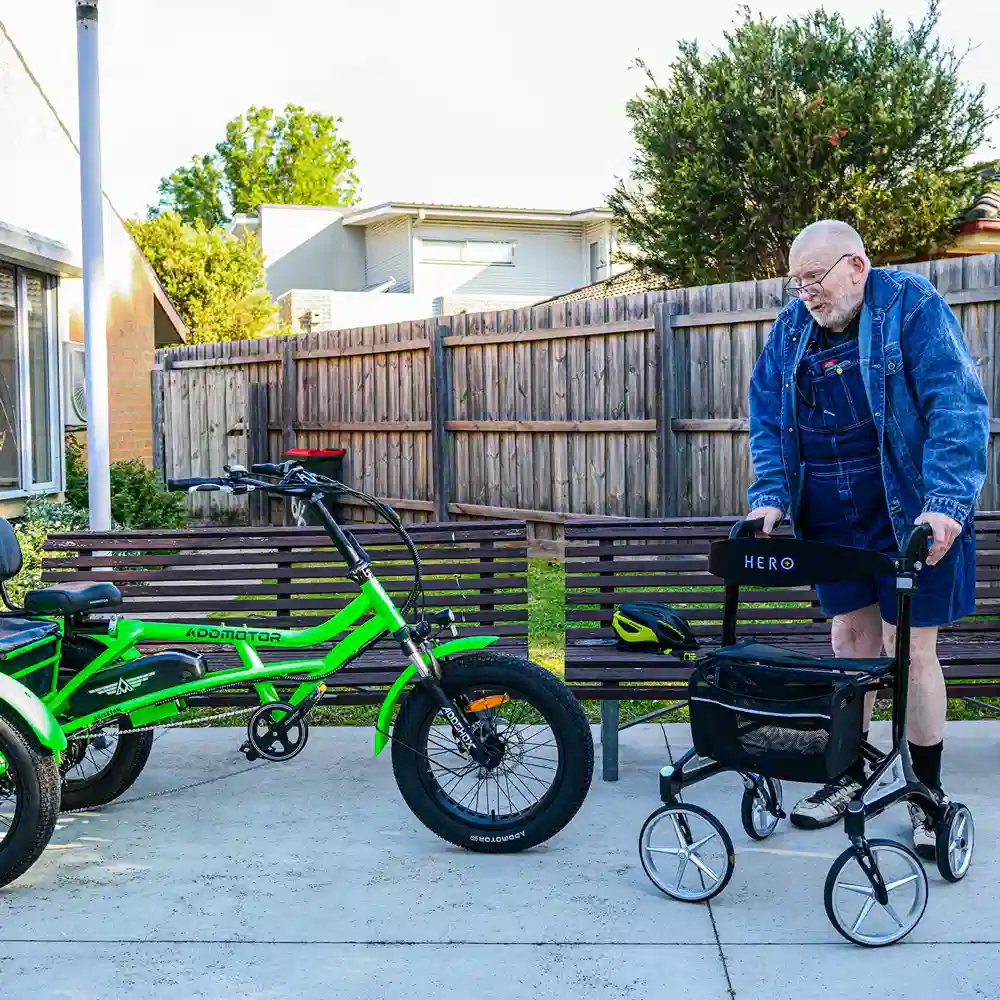Are Fat Tire Bikes More Challenging to Ride?
By Addmotor | 20 February 2025 | 0 Comments
Fat tire bikes are built for adventure. Their wide tires give you better traction, stability, and control on sand, snow, and rough terrain. But with that extra grip comes more rolling resistance, weight, and drag, which means they can take more effort to pedal than standard bikes.
Does that mean they’re too hard to ride? Not at all.
With the right riding techniques, tire pressure adjustments, and electric assist options, you can enjoy all the benefits of a fat tire electric bike without feeling like you’re working too hard.
Let’s dive into why these rugged bikes are both loved and misunderstood.
However, despite these challenges, fat tire bikes shine in specific conditions. Their stability and grip make them perfect for snow, sand, and rugged trails, where traditional bikes would struggle.
One of the main advantages of fat tire bikes is their stability. As the wide tires provide a larger contact area with the ground, this keeps the fat tire electric bike steady on uneven terrain. This stability can be a big plus if you’re riding over loose surfaces or snowy paths.
However, this stability comes with a trade-off. The very design that makes fat tire bikes so stable also makes them less agile. Turning and maneuvering can feel slower and require more thought.
In other words, while you’re less likely to lose balance on a bumpy trail, you might find that quick, sharp movements are more challenging compared to riding a standard electric bike.
Thus, finding the right balance between stability and agility is key to take full advantage of the fat tire bike’s unique strengths.
Fat tire bikes are purpose-built for versatility. They excel in situations where standard bikes might struggle. Here’s why they shine on different terrains:
Electric assist bikes come with a motor that helps propel the bike forward. The motor:
With electric assist, the motor helps compensate for the increased rolling resistance and weight. This allows you to enjoy the stability and off-road benefits of this fat tire e trike without getting overly tired. It also makes this electric fat tire trike more accessible to riders who might not have the stamina for intense physical effort.
Fat tire bikes or electric fat tire trikes aren't inherently harder, they’re just different. While they demand more effort on roads or hills, they transform challenging terrains into smooth rides.
For snowy winters, sandy beaches, or muddy trails, their stability, and grip are unmatched. Pair one with an electric assist, and you’ve got a rugged, go-anywhere machine that’s as fun as it is practical.
Does that mean they’re too hard to ride? Not at all.
With the right riding techniques, tire pressure adjustments, and electric assist options, you can enjoy all the benefits of a fat tire electric bike without feeling like you’re working too hard.
Let’s dive into why these rugged bikes are both loved and misunderstood.
Why Do Fat Tire Bikes Require More Effort?
Fat tire bikes stand apart from standard bicycles due to their wide tires and robust build. The design impacts how you ride in several ways, mainly through three key factors: rolling resistance, bike weight, and aerodynamics.Rolling Resistance:
When a tire rolls, it deforms slightly, losing energy. Since fat tires have a larger contact patch with the ground, they experience more rolling resistance than narrower tires. This means it takes more effort to keep the fat tire electric bike moving.Bike Weight:
Fat tire bikes are built to be durable. They often use heavier frames and thicker tires to support rough terrain. This extra weight means that each pedal stroke requires more effort to accelerate and maintain speed, especially on climbs.Aerodynamics:
Aerodynamics plays a role in how much energy you expend while riding. Fat tire bikes are less streamlined than their narrow-tired counterparts. The broader tires and bulkier frames increase air resistance. Even though the difference might seem minor at low speeds, it can add up over long rides or when you’re at higher speeds.However, despite these challenges, fat tire bikes shine in specific conditions. Their stability and grip make them perfect for snow, sand, and rugged trails, where traditional bikes would struggle.
Stability vs. Agility: A Balancing Act
One of the main advantages of fat tire bikes is their stability. As the wide tires provide a larger contact area with the ground, this keeps the fat tire electric bike steady on uneven terrain. This stability can be a big plus if you’re riding over loose surfaces or snowy paths.However, this stability comes with a trade-off. The very design that makes fat tire bikes so stable also makes them less agile. Turning and maneuvering can feel slower and require more thought.
In other words, while you’re less likely to lose balance on a bumpy trail, you might find that quick, sharp movements are more challenging compared to riding a standard electric bike.
Thus, finding the right balance between stability and agility is key to take full advantage of the fat tire bike’s unique strengths.
Handling Different Terrains: Where Fat Tires Shine
Fat tire bikes are purpose-built for versatility. They excel in situations where standard bikes might struggle. Here’s why they shine on different terrains:
• Snow and Sand: The wide tires spread your weight over a larger surface, preventing you from sinking. This makes them ideal for winter rides or beach adventures.
• Mud and Rough Trails: The extra grip provided by fat tires means you can navigate slippery or uneven surfaces with confidence.
• Off-Road Adventures: Whether you’re riding in forested areas or rugged mountain paths, the low tire pressure (5–15 PSI) absorbs shocks, smoothing out bumps, and gives you the traction you need to stay in control.
While you might use more energy on hard surfaces, the benefits on challenging terrains make fat tire bikes a favorite among off-road enthusiasts.
Electric Assist Solutions: Leveling the Playing Field
Electric assist bikes come with a motor that helps propel the bike forward. The motor:
- Reduces effort on hills and rough terrain.
- Adjusts the bike’s weight, making acceleration easier.
- Extends your range for longer adventures.
For example, the Addmotor Grandtan M-340 e trike (a popular electric fat tire trike) combines stability, a powerful 750W motor, and 450-lbs of payload space, for riders who want comfort and utility. This e trike blends the stability of a 4” fat tire design with the ease of electric assist. Its front suspension adds extra comfort, absorbing bumps and shocks as you ride.With electric assist, the motor helps compensate for the increased rolling resistance and weight. This allows you to enjoy the stability and off-road benefits of this fat tire e trike without getting overly tired. It also makes this electric fat tire trike more accessible to riders who might not have the stamina for intense physical effort.
Tips for Making Fat Tire Bikes Easier to Ride
If you’re new to fat tire bikes or want to improve your riding experience, here are some practical tips to make your ride smoother:● Adjusting Tire Pressure:
Tire pressure can dramatically affect performance. Lower tire pressure (5–10 PSI) increases traction and cushioning, making it easier to handle sand, snow, or loose trails. Additionally, higher pressure (12-15 PSI) reduces rolling resistance on pavement or hard-packed dirt, making pedaling easier. Experiment with different pressures to find the best setup for your terrain.● Using Pedal Assist:
If your fat tire electric bike comes with an electric assist option, take advantage of it. Pedal assist modes help reduce the physical demand on your legs. You can choose different levels of assistance based on the terrain and your comfort level.● Selecting the Right Gearing:
Shifting gears correctly makes pedaling feel smoother:Lower gears help with climbing hills and riding on soft terrain, reducing strain on your legs.
Higher gears improve speed on flat roads or downhills while keeping your cadence steady.
Pedaling at a consistently higher cadence (spinning the pedals faster in a lower gear) prevents fatigue and keeps momentum going.
● Focus on Body Positioning:
Keep your body relaxed and centered over the bike. Make sure to engage your core muscles to evenly distribute pedaling power. Adjust your positioning when turning or navigating obstacles.
Conclusion: Embrace the Adventure
Fat tire bikes or electric fat tire trikes aren't inherently harder, they’re just different. While they demand more effort on roads or hills, they transform challenging terrains into smooth rides. For snowy winters, sandy beaches, or muddy trails, their stability, and grip are unmatched. Pair one with an electric assist, and you’ve got a rugged, go-anywhere machine that’s as fun as it is practical.
Leave a Reply
Your email address will not be published.Required fields are marked. *
Latest Stories

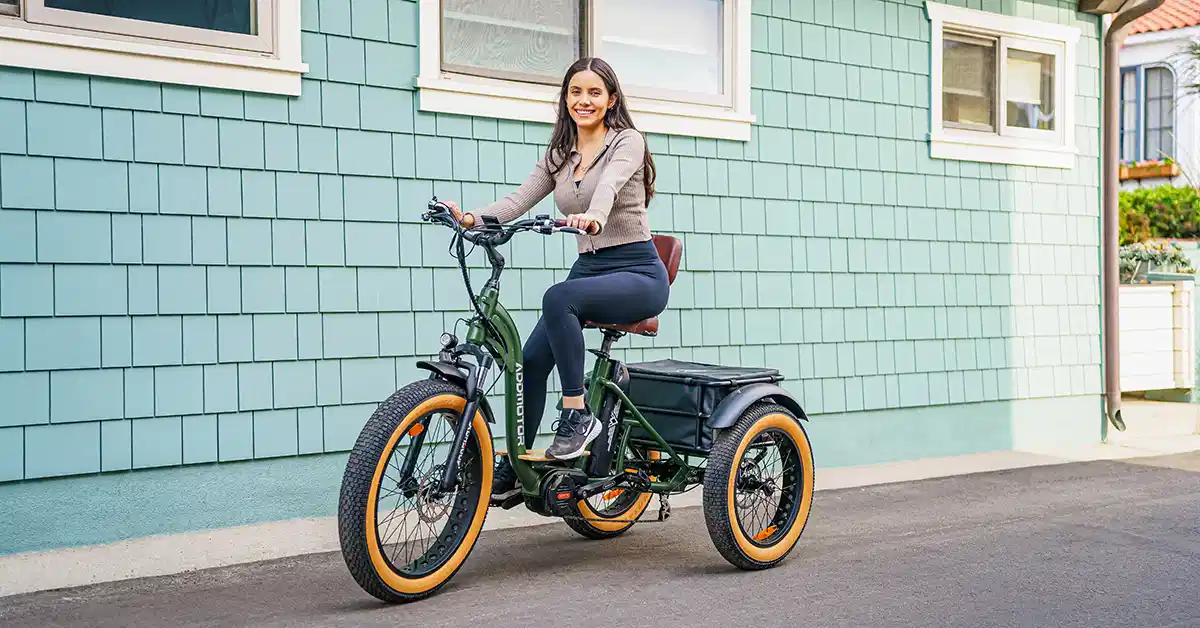
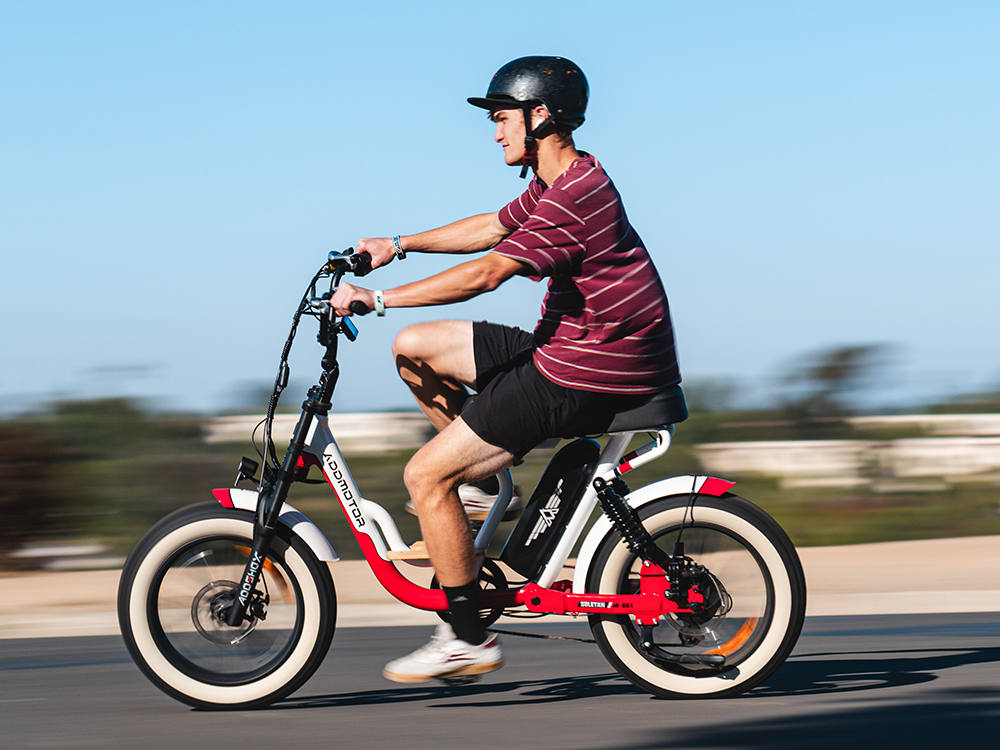
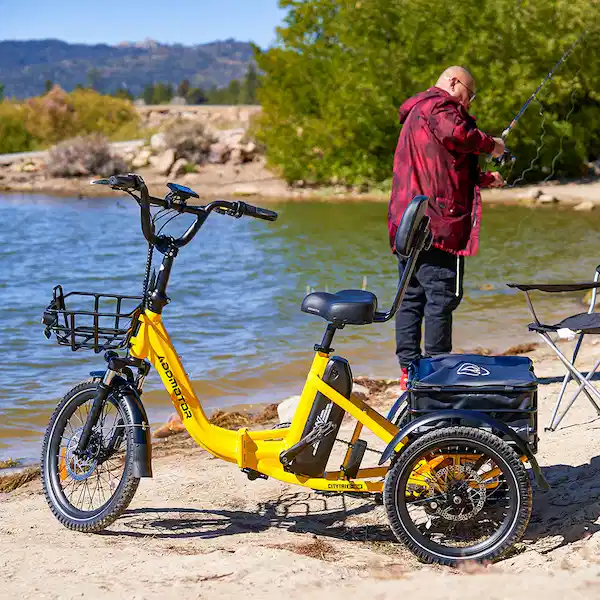
_1739850786.webp)
